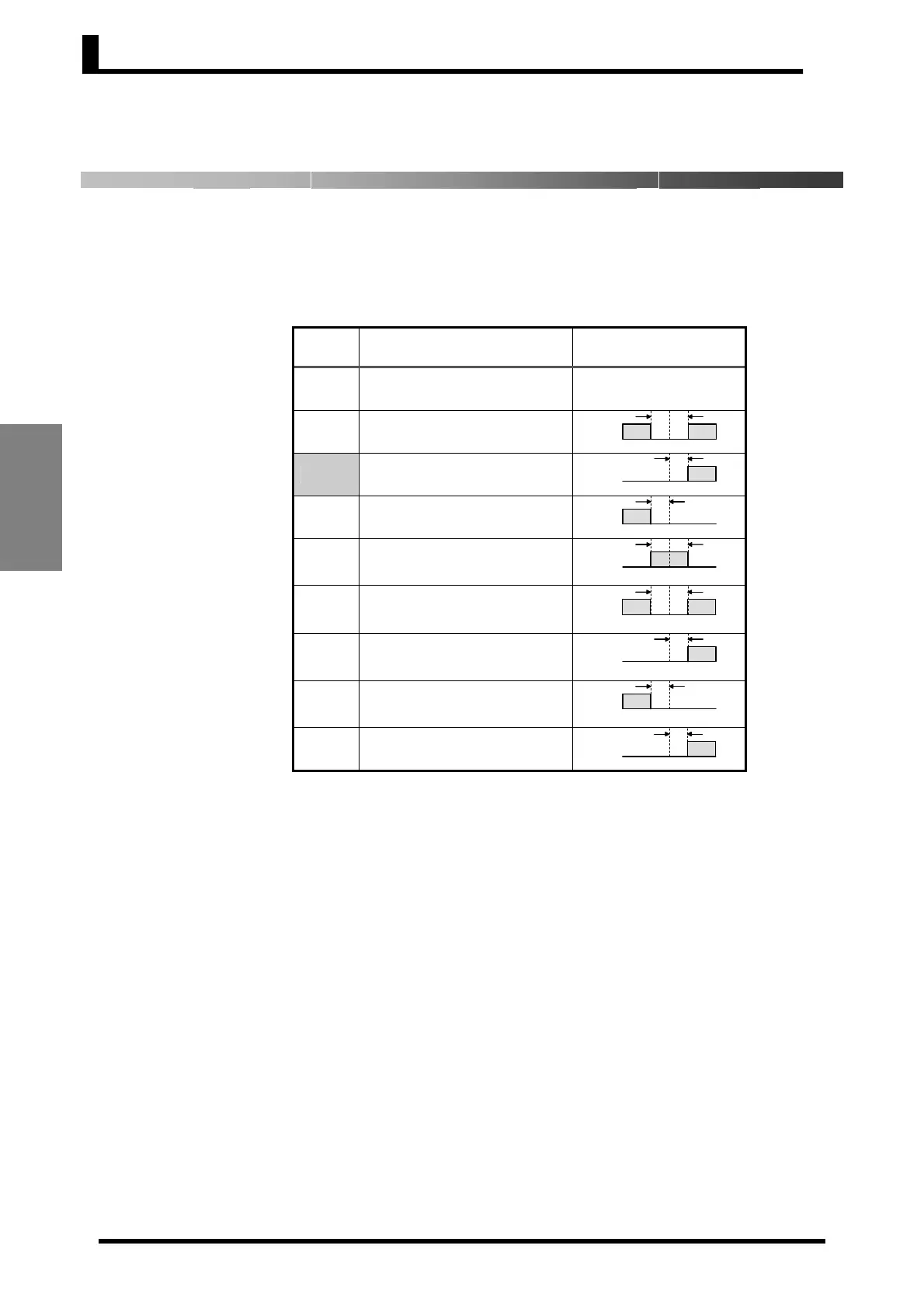Section 3 Basic Operations
3-14
Basic
Operations
3.8 Alarm Outputs
• Alarms can be used with E5CS@1@@-@ (one alarm point), E5CS@2@@-@ (two alarm points),
E5CS@1@@U-@ (one alarm point), and E5CS@2@@U-@ (two alarm points).
Alarm output conditions are determined by a combination of the “alarm type” and “alarm value”.
• The alarm type and alarm value are explained below.
■ Alarm Types
Set
value
Alarm type
Alarm output
operation
0,9
Alarm function OFF
Output OFF
1
Upper- and lower-limit
2
Upper-limit
3
Lower-limit
4
Upper- and lower-limit
range
5
Upper- and lower-limit with
standby sequence
6
Upper-limit with standby
sequence
7
Lower-limit with standby
sequence
8
Absolute-value upper-limit
* Alarm values 1 to 7: Set the deviation from the SP (set point) in the
alarm value (X).
Alarm 8: Set the absolute value from 0°C/°F in the alarm value (Y).
* The default is 2 (Upper-limit alarm).
* Set the alarm type for alarm 1 (alarm 1 type) using the alarm mode
switch.
* Set the alarm type for alarm 2 (alarm 2 type) in the “alarm 2 type”
parameter of the initial setting level (5).
■ Alarm Values
• Alarm values are indicated by “X” and “Y” in the previous table of
alarm types.
• The alarm value 1 setting is set in ALM mode, and alarm value 2 is
set in ALM2 mode. In ALM mode, ALM is lit in the display, and in
ALM2 mode, ALM is flashing in the display.
Operating Procedure
This procedure sets alarm 1 as an upper-limit alarm. The related
parameters and settings are shown below. The alarm is output when
the set point exceeds 10°C. (In this example, the temperature unit is
°C.)
Alarm 1 type = 2 (upper limit)
Alarm value 1 = 10
OFF
ON
SP
XX
OFF
ON
SP
XX
ON
OFF
SP
XX
OFF
ON
SP
X
OFF
ON
SP
X
OFF
ON
SP
X
OFF
ON
SP
X
OFF
ON
0
Y
